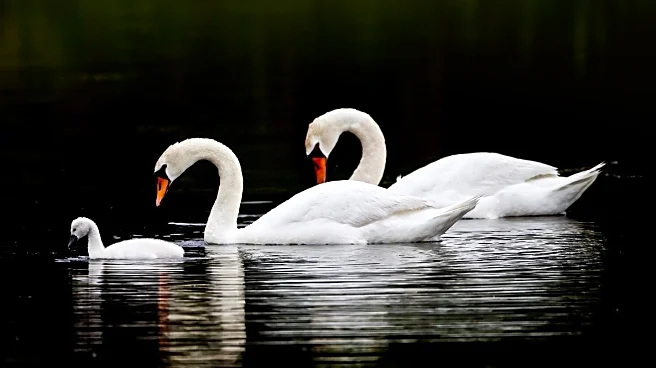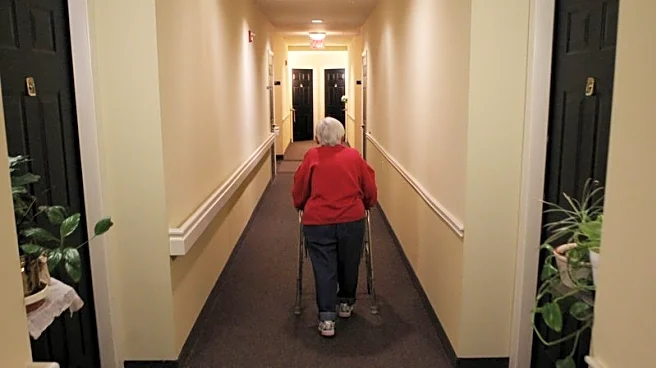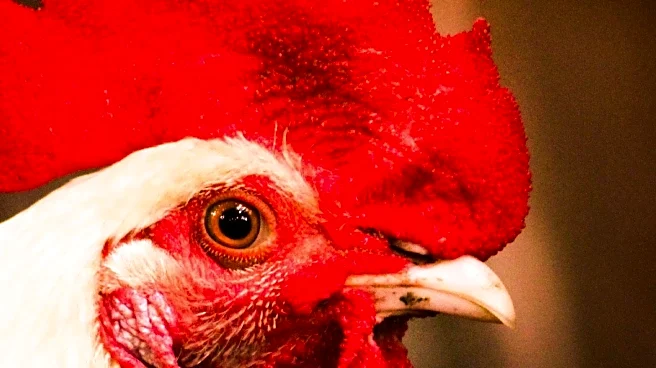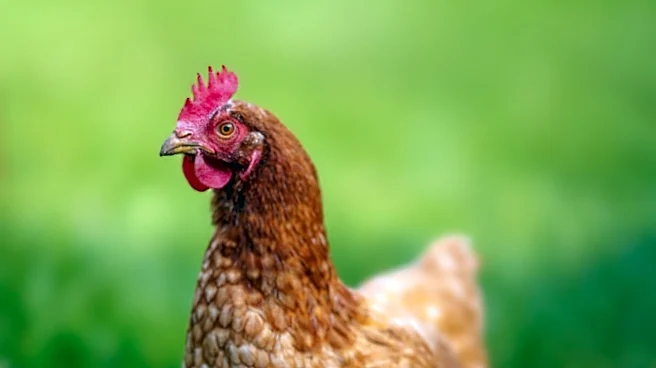What's Happening?
The Department for Environment, Food and Rural Affairs (Defra) has confirmed cases of avian flu in six wild birds in Northamptonshire. The H5N1 virus, commonly known as bird flu, was detected in four mute
swans in Wellingborough and two Canada geese in the northern part of the county. This follows reports of over a dozen swan deaths on social media. MK Swan Rescue, a charity focused on waterfowl welfare, expressed concern over the situation, urging the public not to touch or move sick or dead birds and to report them to local authorities. The UK's chief veterinary officer, Christine Middlemiss, emphasized the importance of robust biosecurity measures to limit the spread of the disease, noting the high risk posed by wild birds.
Why It's Important?
The confirmation of bird flu in Northamptonshire highlights the ongoing threat of avian diseases to wildlife and domestic poultry. The virus poses significant risks to farmers and poultry producers, potentially leading to economic losses and the need for culling infected birds. While the risk to the public is considered very low, the situation underscores the importance of biosecurity measures to prevent the spread of the disease. The outbreak could lead to increased monitoring and restrictions on bird movements, affecting local wildlife conservation efforts and the poultry industry.
What's Next?
Defra has advised bird keepers to remain vigilant and report any signs of disease to the Animal and Plant Health Agency. The situation may lead to further biosecurity measures and monitoring to prevent the spread of avian flu. Local councils and wildlife organizations are likely to increase efforts to educate the public on how to handle sick or dead birds safely. The outbreak may prompt discussions on improving biosecurity protocols and support for affected farmers and wildlife conservation groups.
Beyond the Headlines
The bird flu outbreak in Northamptonshire raises ethical and environmental concerns regarding wildlife management and disease control. The need for culling infected birds poses moral dilemmas for conservationists and animal welfare advocates. Additionally, the outbreak highlights the interconnectedness of human activities and wildlife health, prompting discussions on sustainable practices to minimize disease transmission between wild and domestic animals.













